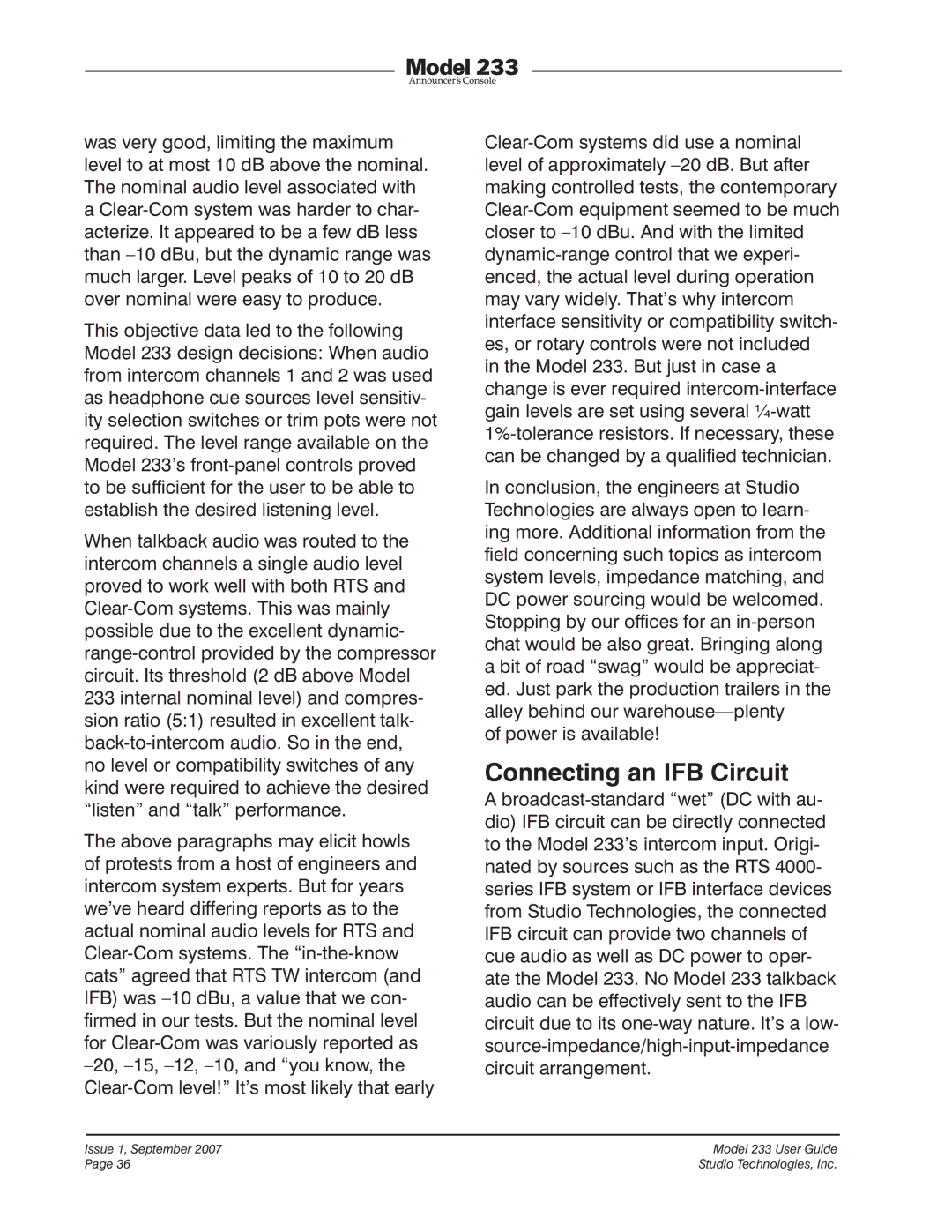was very good, limiting the maximum level to at most 10 dB above the nominal. The nominal audio level associated with a Clear-Com system was harder to char- acterize. It appeared to be a few dB less than –10 dBu, but the dynamic range was much larger. Level peaks of 10 to 20 dB over nominal were easy to produce.
This objective data led to the following Model 233 design decisions: When audio from intercom channels 1 and 2 was used as headphone cue sources level sensitiv- ity selection switches or trim pots were not required. The level range available on the Model 233’s front-panel controls proved to be sufficient for the user to be able to establish the desired listening level.
When talkback audio was routed to the intercom channels a single audio level proved to work well with both RTS and Clear-Com systems. This was mainly possible due to the excellent dynamic- range-control provided by the compressor circuit. Its threshold (2 dB above Model 233 internal nominal level) and compres- sion ratio (5:1) resulted in excellent talk- back-to-intercom audio. So in the end, no level or compatibility switches of any kind were required to achieve the desired “listen” and “talk” performance.
The above paragraphs may elicit howls of protests from a host of engineers and intercom system experts. But for years we’ve heard differing reports as to the actual nominal audio levels for RTS and Clear-Com systems. The “in-the-know cats” agreed that RTS TW intercom (and IFB) was –10 dBu, a value that we con- firmed in our tests. But the nominal level for Clear-Com was variously reported as –20, –15, –12, –10, and “you know, the Clear-Com level!” It’s most likely that early
Clear-Com systems did use a nominal level of approximately –20 dB. But after making controlled tests, the contemporary Clear-Com equipment seemed to be much closer to –10 dBu. And with the limited dynamic-range control that we experi- enced, the actual level during operation may vary widely. That’s why intercom interface sensitivity or compatibility switch- es, or rotary controls were not included in the Model 233. But just in case a change is ever required intercom-interface gain levels are set using several ¼-watt
1%-tolerance resistors. If necessary, these can be changed by a qualified technician.
In conclusion, the engineers at Studio Technologies are always open to learn- ing more. Additional information from the field concerning such topics as intercom system levels, impedance matching, and DC power sourcing would be welcomed. Stopping by our offices for an in-person chat would be also great. Bringing along a bit of road “swag” would be appreciat- ed. Just park the production trailers in the alley behind our warehouse—plenty
of power is available!
Connecting an IFB Circuit
A broadcast-standard “wet” (DC with au- dio) IFB circuit can be directly connected to the Model 233’s intercom input. Origi- nated by sources such as the RTS 4000- series IFB system or IFB interface devices from Studio Technologies, the connected IFB circuit can provide two channels of cue audio as well as DC power to oper- ate the Model 233. No Model 233 talkback audio can be effectively sent to the IFB circuit due to its one-way nature. It’s a low- source-impedance/high-input-impedance circuit arrangement.

